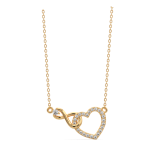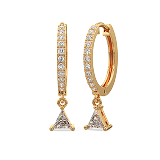Tips to Choose the Right Mangalsutra for the Modern Bride
A mangalsutra isn’t just a piece of jewellery; it’s a promise you wear every day. Whether you lean traditional or minimalist-chic, the right design should echo your personality, lifestyle, and cultural story. Below is a comprehensive guide packed with fresh, often-overlooked tips (missing from most blogs we audited) to help every bride find her ideal mangalsutra.
1. Start With Your Style Persona
Before diving into metals and motifs, ask yourself: Am I a classic romantic, a free-spirited boho, or a sleek minimalist?
- Classic Brides often gravitate toward yellow-gold and timeless floral pendants.
- Minimalists may prefer bar silhouettes, petite diamonds, or sterling-silver chains.
- Trendsetters can explore mixed metals, geometric pendants, or asymmetrical designs.
2. Choose a Motif With Meaning
Beyond florals and circles, today’s mangalsutras come in:
- Celestial curves for stargazers and dreamers.
- Twin flames symbolise two distinct souls in harmony.
- Petal clusters that speak of growth and renewal.
Pick a motif that tells your love story, not just what’s trending.
3. Match Metal to Skin Tone & Lifestyle
- Yellow gold flatters warm undertones and traditional wardrobes.
- Rose gold adds a modern, romantic blush.
- White gold or sterling silver pairs seamlessly with Western outfits and cooler undertones.
- Mixed-metal mangalsutras let you match every accessory in your jewellery box.
Allergy alert: Nickel-free 925 sterling silver or 18k gold vermeil is kinder to sensitive skin.
4. Nail the Ideal Chain Type & Length
Chain details impact comfort and styling:
- Short bar styles (14–16 in.) sit higher, great for layering with chokers.
- Mid-length (18 in.) rests on the collarbone and slips neatly under shirts.
-
Adjustable slider chains give you on-the-fly length control.
Also consider the bead spacing and thickness; fewer black beads yield a lighter, contemporary vibe.
5. Balance Weight With Daily Wear
A 5-gram pendant may look dazzling, but if you plan to wear it to the gym or office, test its weight. Rule of thumb: If it feels heavy after 20 minutes, choose a lighter alternative.
6. Pick Your Stone Wisely
Diamonds are forever, but lab-grown diamonds and Moissanite offer similar brilliance at friendlier prices. Colored gems or tiny birthstones hidden in the gallery add subtle personalisation.
7. Think Layer-Friendly & Transitional
Look for sleek silhouettes that layer effortlessly with Western chains, yet remain elegant with saris and lehengas. A detachable pendant (or a convertible bracelet-to-necklace design) maximises versatility.
New to the tradition? Discover What Mangalsutra is.
8. Inspect the Clasp & Craftsmanship
Opt for secure lobster or push-lock clasps with soldered links, especially if you lead an active lifestyle. Hand-set stones, smooth edges, and hallmarked metals indicate quality craftsmanship.
9. Personalise for Extra Sentiment
Engrave initials, wedding dates, or even GPS coordinates of where you first met. Some brands let you embed micro-photographs or fingerprints inside the pendant, a secret only you two know.
10. Align With Your Budget & Upgrade Plans
Set a realistic range, say ₹15,000 – ₹ 50,000 (US$ $180 – $600), then decide where you can flex: metal purity, gemstone size, or custom features. Many jewellers offer upgrade programs: trade up your pendant later without replacing the chain.
11. Factor In Ethics & Sustainability
If responsible sourcing matters, choose BIS-hallmarked gold, vermeil, or sterling silver paired with lab-grown diamonds. They’re conflict-free, eco-conscious, and just as dazzling.
12. Respect Regional & Family Traditions
Maharashtrian brides may prefer vaati pendants, while South Indian brides often favour gold-coin motifs. Discuss with family elders, then merge tradition with your modern aesthetic.
13. Plan for After-Care
Ask your jeweller about:
- Free annual polish & prong checks.
- Lifetime re-stringing of black beads.
- Easy cleaning, mild soap, and a soft brush will keep diamonds sparkling.
Five KYMEE Designs That Tick Every Box
Looking for real examples? KYMEE’s latest collection blends these tips into five drool-worthy pieces:
1. Floral Diamond Bar Mangalsutra
The horizontal bar silhouette gives it a sleek, contemporary edge, while delicate floral motifs bring in that timeless bridal charm. It sits beautifully across the collarbone and is perfect for everyday wear.
2. Timeless Floral Mangalsutra
The flowers are arranged in a symmetrical pattern that radiates softness, making it a wonderful choice for brides who are sentimental and elegant. It’s a modern mangalsutra design that you’ll never outgrow.
3. Celestial Curve Mangalsutra
It’s crafted in pure sterling silver with a unique crescent-shaped pendant that symbolises infinite love and celestial alignment.
4. Diamond Mangalsutra
It features lab-grown diamonds that shimmer with brilliance, offering ethical elegance that you can feel proud to wear.
5. Twin Flame Mangalsutra
With two sparkling pendants suspended on either side, the Twin Flame Mangalsutra reflects the idea of two distinct individuals coming together in perfect harmony.
Final Words
Selecting a mangalsutra is deeply personal. Use these tips, your lifestyle, desired symbolism, metal preference, and budget, to guide you toward a piece that feels authentically you. When you marry tradition with intentional design, your mangalsutra becomes more than jewellery; it becomes a wearable love letter you’ll cherish every day.
Ready to explore? Browse KYMEE’s full vermeil mangalsutra range and find a design that tells your story.
FAQs
-
What are the traditional rules for wearing a mangalsutra?
Traditionally, a mangalsutra is worn daily after marriage as a symbol of a woman’s marital status and commitment, especially in Hindu culture. -
Who usually selects the mangalsutra?
The design and style are often chosen by the bride or her family, with input from the groom or his family based on cultural preferences. -
Who is responsible for purchasing the bride’s mangalsutra?
Traditionally, the groom or his family buys the mangalsutra as a gift for the bride during the wedding ceremony. -
Which is the most suitable material for a mangalsutra?
Gold or vermeil is the most preferred metal for mangalsutras due to its purity and cultural value, often paired with black beads. -
How can one select the right mangalsutra?
Choose based on comfort, length, metal purity, and design, whether traditional or modern, while keeping personal style and daily wear in mind. -
Why are black beads used in a mangalsutra?
Black beads are believed to ward off evil eyes and protect the marriage from negative energies. -
What is the significance of wearing a mangalsutra?
It represents marital commitment, the well-being of the husband, and the sacred bond between the couple. -
What do the black beads in a mangalsutra symbolise?
They stand for protection, positivity, and the strength of the marital relationship. -
Why is a mangalsutra worn around the neck?
Wearing it around the neck symbolises a sacred promise, believed to keep the husband safe and strengthen the bond. -
What is the meaning of the nine beads in a mangalsutra?
Nine beads often represent the nine forms of Goddess Durga and are believed to offer spiritual protection and balance. -
Can a woman take off her mangalsutra at night?
Yes, modern practices allow removing it at night for comfort, though some follow the tradition of wearing it 24/7. -
Are there contemporary mangalsutra designs available today?
Yes, modern mangalsutras come in minimalist, diamond-studded, bracelet, or pendant styles, blending tradition with today’s fashion.
 Best Seller
Best Seller
 New In
New In
 Necklaces
Necklaces
 Rings
Rings
 Bracelets
Bracelets
 Earrings
Earrings
 Personalized
Personalized
 Mangalsutra
Mangalsutra
 Vibe Combo
Vibe Combo









































